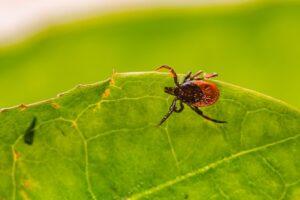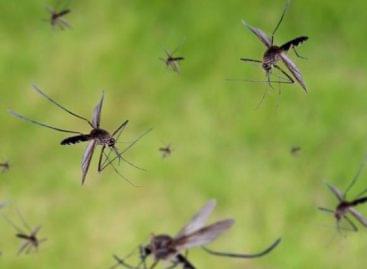Facts and myths about ticks
Tick bites can be dangerous, but if we are informed about their prevention, what to do, treatment or consequences, then we should not rely on rumors and beliefs, because we will only increase the risks. Let’s stick to the facts! It is worth turning to specialist books, professional forums on the Internet, or our family doctor if we have any questions.
Here are 7 misconceptions that we will dispel right away!
We only need to pay attention to ticks in the summer
 In the summer, we can hear from many more sources that we need to pay attention to ticks, but this does not mean that they can only pose a danger in the summer. The biggest enemy of ticks is long, hard frost, but due to climate change, winters are getting milder, so ticks do not die so easily. If tick populations survive the winter in larger numbers, their number may increase. In addition, the early arrival of spring and the prolonged summer can also be deceptive, and we can still be exposed to ticks during these periods. The same applies to the time of day, as ticks attack regardless of the time of day.1
In the summer, we can hear from many more sources that we need to pay attention to ticks, but this does not mean that they can only pose a danger in the summer. The biggest enemy of ticks is long, hard frost, but due to climate change, winters are getting milder, so ticks do not die so easily. If tick populations survive the winter in larger numbers, their number may increase. In addition, the early arrival of spring and the prolonged summer can also be deceptive, and we can still be exposed to ticks during these periods. The same applies to the time of day, as ticks attack regardless of the time of day.1
TBE virus* infection is only transmitted by ticks
TBE virus is the causative agent of viral encephalitis, i.e. tick-borne encephalitis. TBE virus spreads from animals to humans and is usually transmitted by tick bites, more specifically by the bite of the red-bellied common tick (Ixodes ricinus). The tick, as a “vector”, transmits the virus from infected animals to humans. However, it is important to know that the infection can also be contracted by consuming unpasteurized milk from infected goats, sheep, and cows, as well as cheese made from them.1
Ticks can only be encountered during excursions
It is not true that ticks only occur in forested, field areas, and hiking trails. They can also be found in urban environments. Therefore, we can be exposed to the same danger there. Ticks can also occur in city parks, playgrounds, and on grassy, bushy beaches. If we have pets, we need to be especially careful, as pets can also bring ticks into our homes. 1
Ticks can only be transmitted to humans from trees
Many people think that they are only at risk near trees, as ticks jump from trees to humans and animals. This is not true. In fact, ticks cannot jump and do not often occur in places higher than 1.5 meters. Ticks sense exhaled carbon dioxide, body temperature, and vibrations caused by movement, so they cling to their victim’s legs from blades of grass and leaves.
All tick bites cause disease
It is not the tick bite that causes the disease, but the pathogens carried by the ticks. This means that only an infected tick bite can cause infection, but it also depends on how long the tick has been inside us. In our country, the two most important tick-borne diseases dangerous to humans are encephalitis caused by the TSME virus and Lyme disease. Both can be transmitted by the common tick.1
Related news
Haleon to sell nicotine replacement therapy business outside US for $633 mln
🎧 Hallgasd a cikket: Lejátszás Szünet Folytatás Leállítás Nyelv: Auto…
Read more >Insect repellents are safe according to the product test of the Conscious Buyers Association
🎧 Hallgasd a cikket: Lejátszás Szünet Folytatás Leállítás Nyelv: Auto…
Read more >Related news
Christmas shock in commerce: for the first time, we can pay with bank cards in fewer places
🎧 Hallgasd a cikket: Lejátszás Szünet Folytatás Leállítás Nyelv: Auto…
Read more >Hungarian Confectionery Manufacturers Association: trends in 2025 and prospects for 2026
🎧 Hallgasd a cikket: Lejátszás Szünet Folytatás Leállítás Nyelv: Auto…
Read more >Most grocery chains will be open until noon on December 24th
🎧 Hallgasd a cikket: Lejátszás Szünet Folytatás Leállítás Nyelv: Auto…
Read more >





